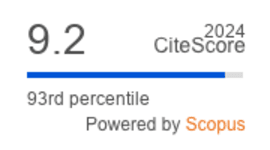Complete genome of mangrove-derived anti-MRSA streptomycete, Streptomyces pluripotens MUSC 135T
DOI:
https://doi.org/10.36877/pmmb.a0000004Abstract
Microorganisms serve as attractive resources, owing to their ability to synthesize structurally-diverse substances
with various bioactivities. Within the Bacteria domain, members of the genus Streptomyces have demonstrated remarkable
ability to produce clinically useful, secondary metabolites such as anticancer, antioxidants, antivirals and antibacterials.
Streptomyces pluripotens MUSC 135T was isolated as novel strain from mangrove forest in Malaysia. This strain exhibited
broad spectrum bacteriocin against several pathogens including methicillin-resistant Staphylococcus aureus (MRSA) strain
ATCC BAA-44, Salmonella typhi ATCC 19430T and Aeromonas hydrophila ATCC 7966T. Thus, the strain was selected for
whole genome sequencing as an attempt to explore its bioactive potential. Here we report the first complete genome of S.
pluripotens MUSC 135T genome which comprise of 7.35 Mbp with G+C content of 69.9 %. A total of 6,404 open reading
frames (ORFs) were predicted, along with 18 rRNA and 69 tRNA genes. Using bacteriocin mining tool, BAGEL detected
eights gene clusters associated with bacteriocin production including lanthipeptides and linear azol(in)e-containing peptides
(LAPs). Members of Streptomyces have contributed greatly towards improving lives, particularly against deadly infections
and chronic diseases. The availability of S. pluripotens MUSC 135T genome sequence has opened new window for drug
discovery, particularly for effective drugs against harmful pathogens such as MRSA and certainly deserves further detailed
study.
Downloads
Published
How to Cite
Issue
Section
License
Author(s) shall retain the copyright of their work and grant the Journal/Publisher right for the first publication with the work simultaneously licensed under:
Creative Commons Attribution-NonCommercial 4.0 International (CC BY-NC 4.0). This license allows for the copying, distribution and transmission of the work, provided the correct attribution of the original creator is stated. Adaptation and remixing are also permitted.

This broad license intends to facilitate free access to, as well as the unrestricted reuse of, original works of all types for non-commercial purposes.
The author(s) permits HH Publisher to publish this article that has not been submitted elsewhere.



.png)

.jpg)
